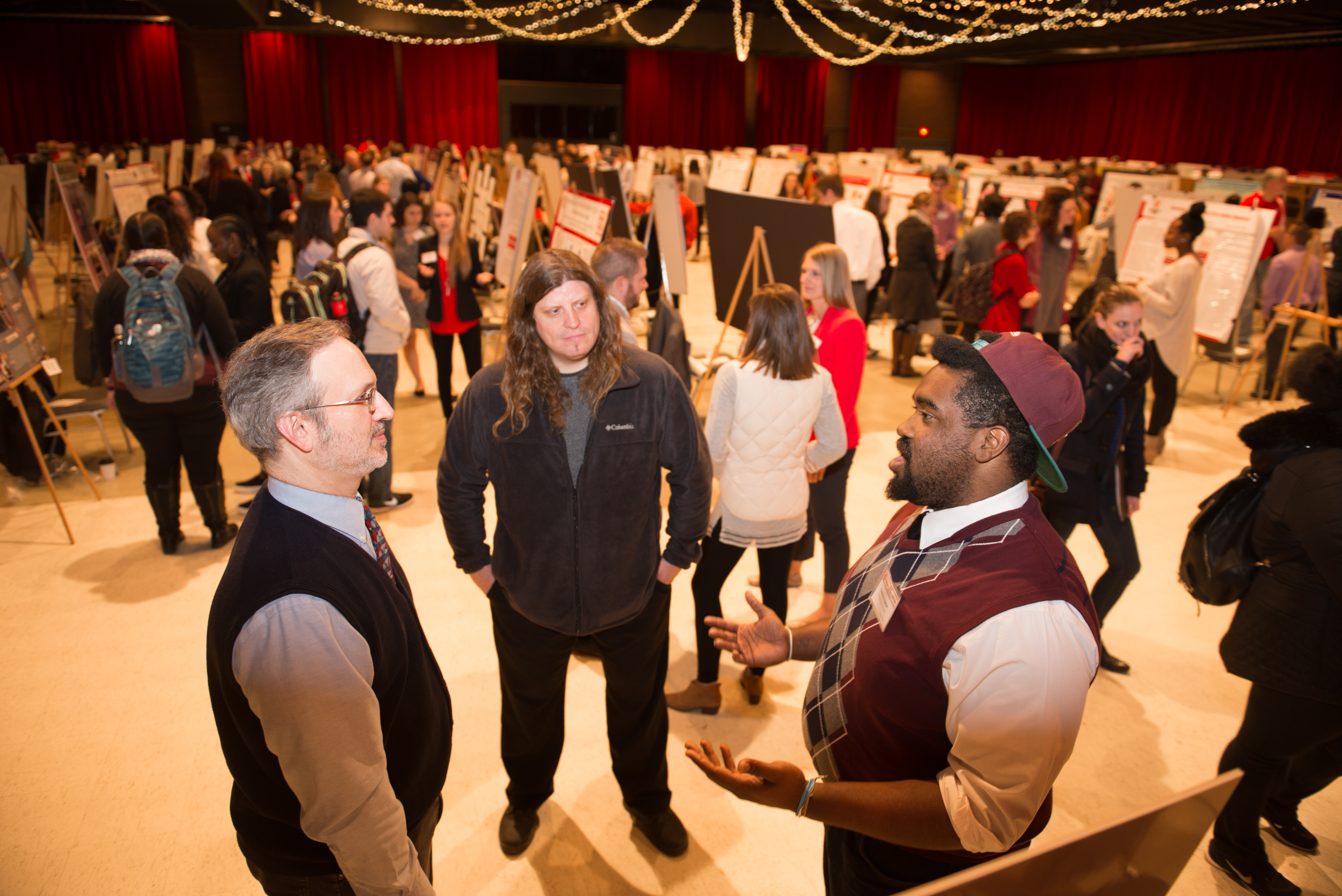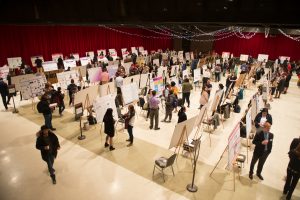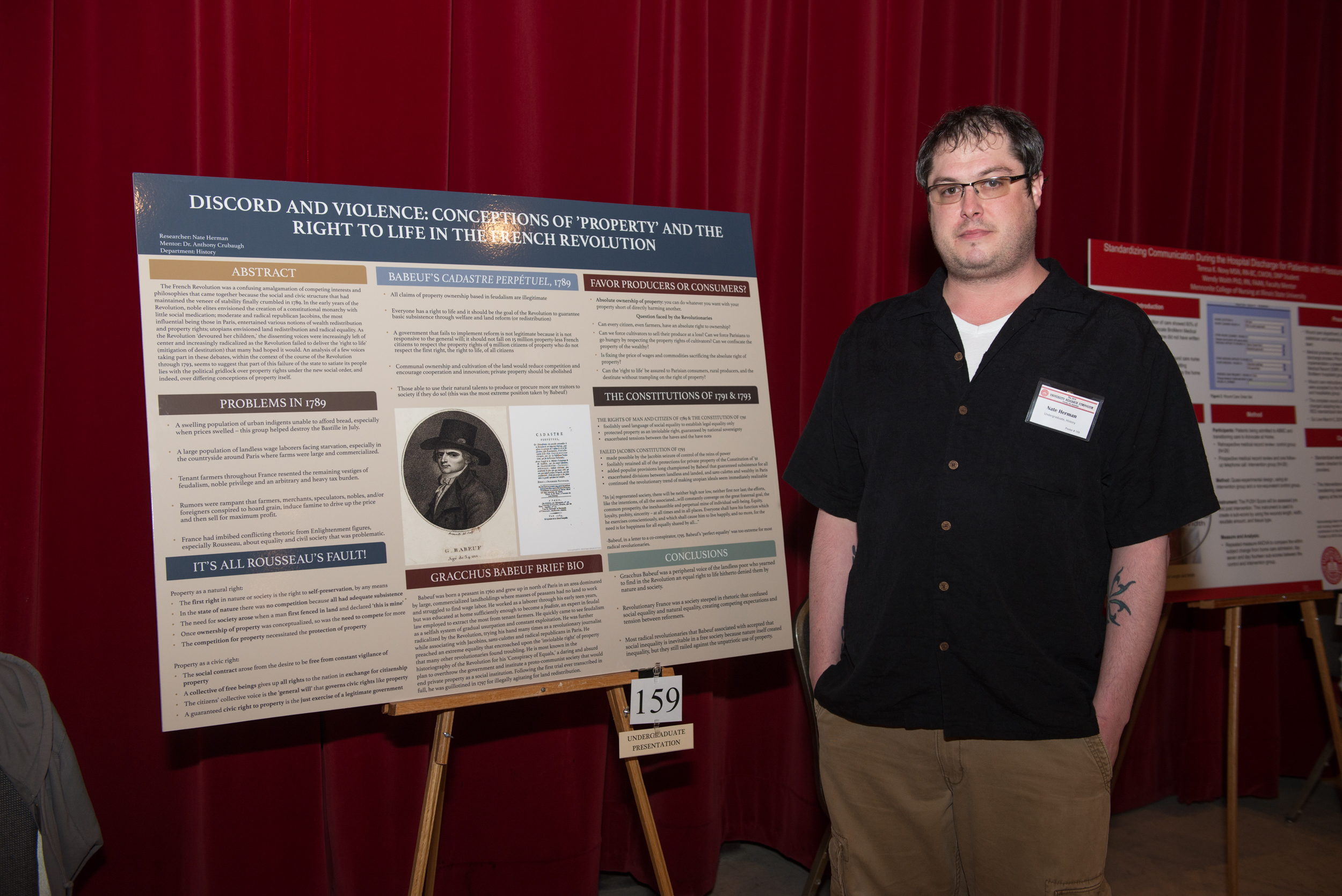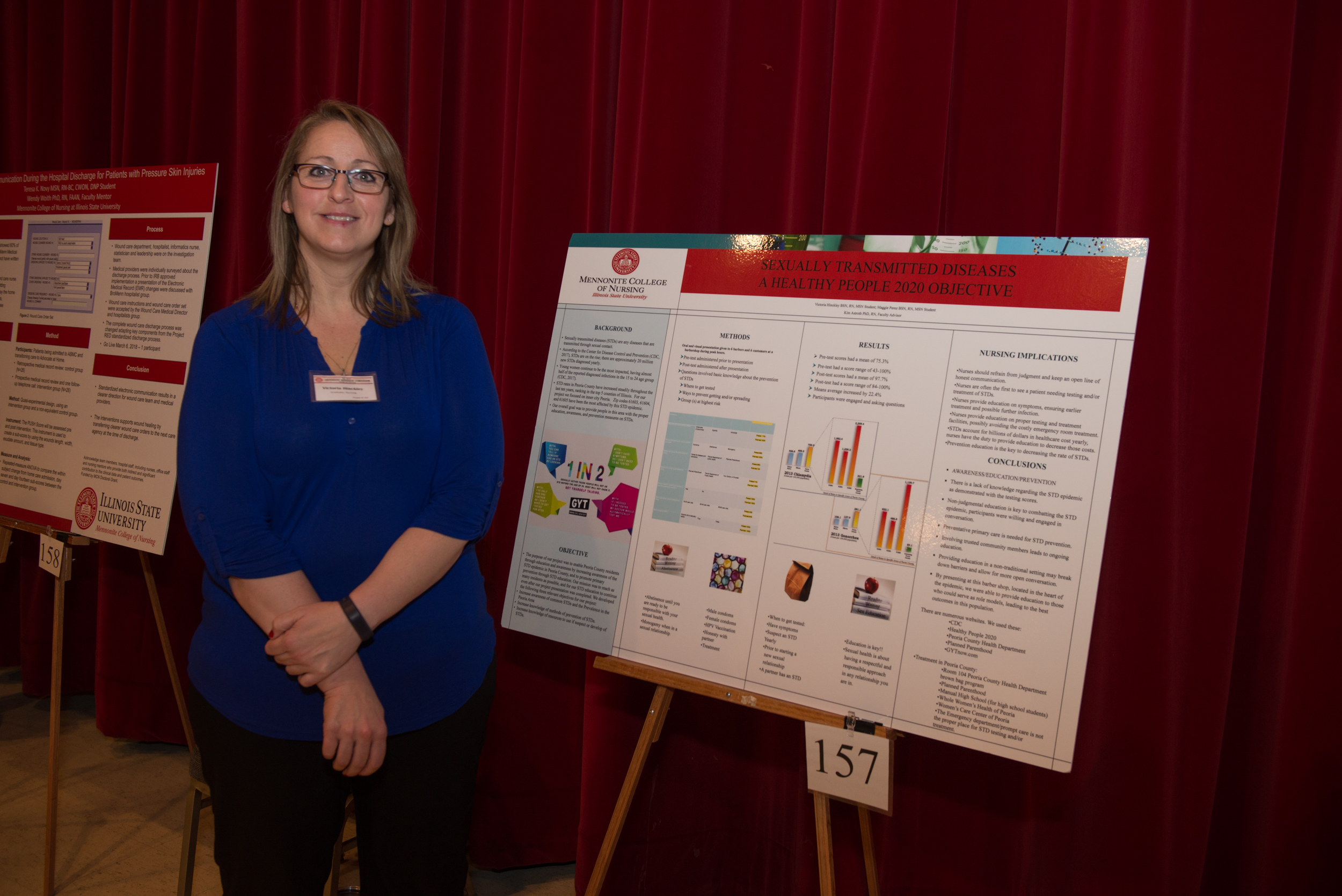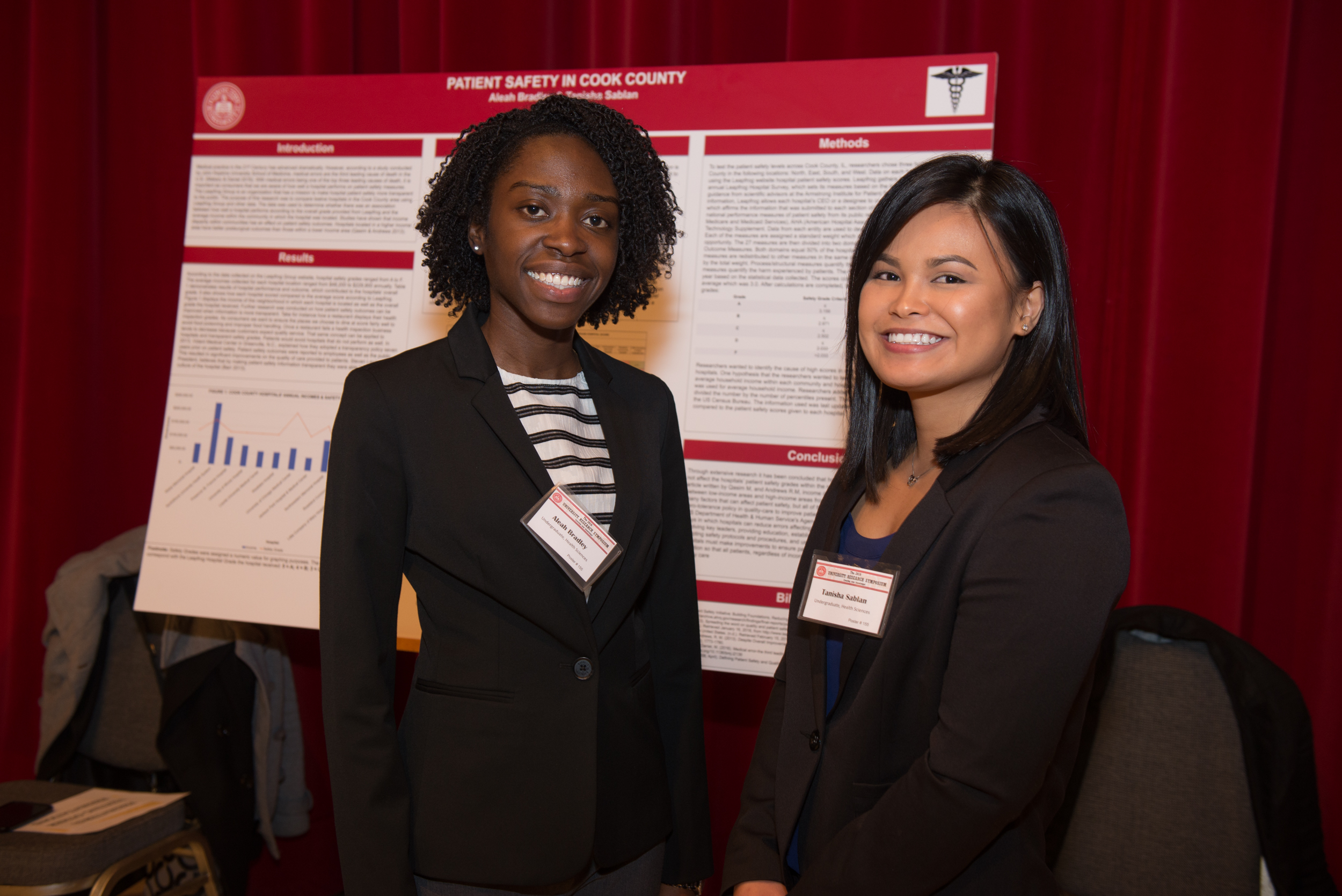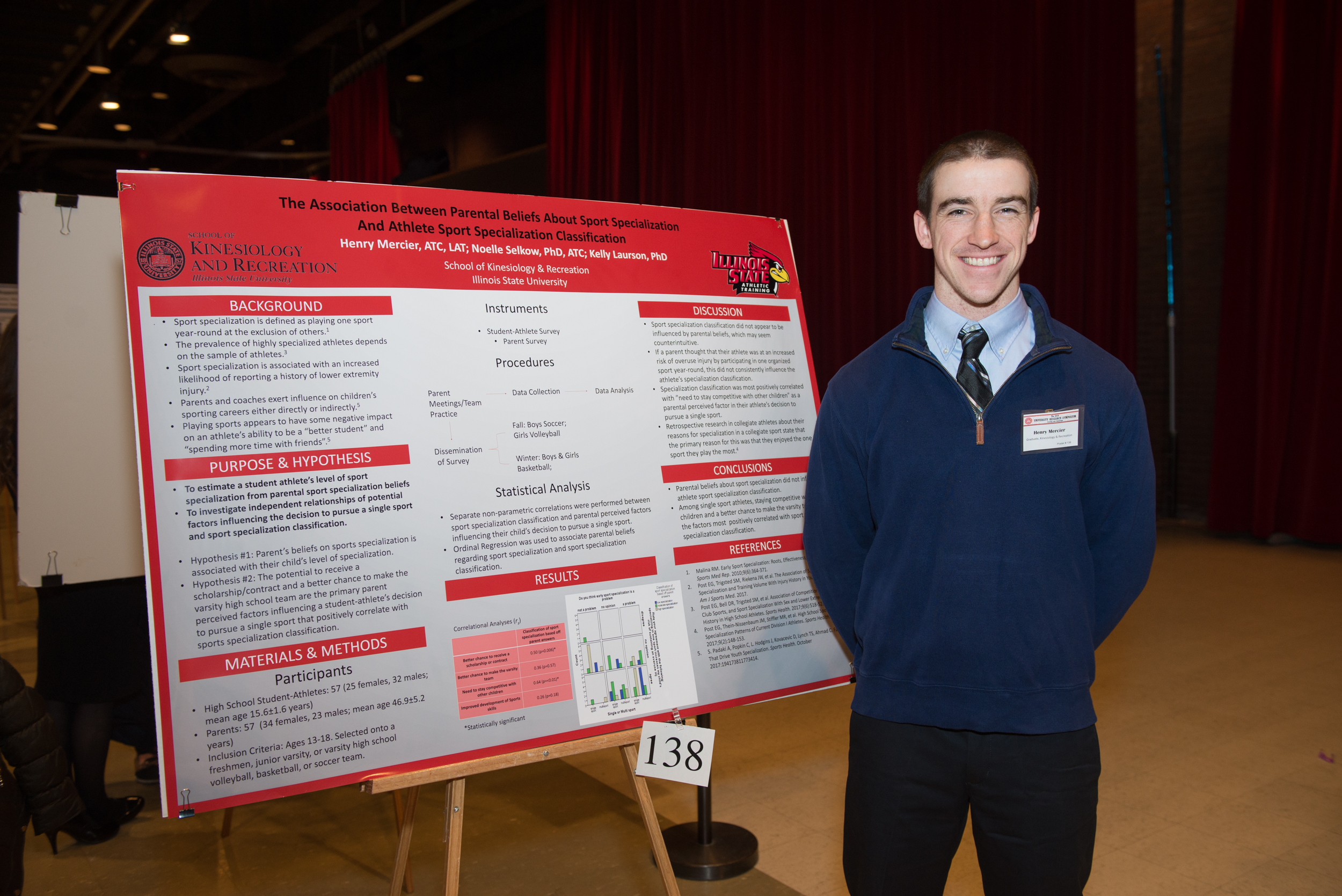There are a lot of reasons to love Illinois State Graduate School’s annual Research Symposium.
It’s a great showcase for graduate and undergraduate students to present their scholarly work to their colleagues and the public. The event is also a perfect example of the special interaction between faculty and students at Illinois State, where seasoned researchers work hand-in-hand with their proteges on projects that apply classroom learning to the real world.
But what might be the symposium’s best asset? It’s brain candy for the intellectually curious. You can walk 5 feet in any direction in the Brown Ballroom and learn about subjects as varied as which Chicago hospitals are safest for patients, why property battles during the French Revolution relate to today’s political debates, and how colleges are, or are not, making higher education more accessible to students with intellectual and physical disabilities. And that is just the proverbial tip of the iceberg.
More than 455 students from 26 programs participated in this year’s event, held across two sessions on Friday, April 6, in the Bone Student Center. The symposium encourages cross-disciplinary association and focuses on communicating research and creative activity by having students display research posters and discuss their work with attendees. Also, as part of the symposium, oral and panel presentations of student work were hosted in locations across campus.
Below are some snippets, photos, videos, and social media from the symposium.
Nate Herman, an undergraduate history major, researched the property battles that occurred during the French Revolution as the country’s feudal system broke down. He specifically studied the life of proto-communist François-Noel “Gracchus” Babeuf, whose push for massive land redistribution led to his execution. The big question facing the French was how to maintain property rights while ensuring the masses could eat. “It reminded me a lot about debates about property today,” Herman said.
Victoria Hinckley, a master’s student in the Mennonite College of Nursing’s FNP program, looked at the rate of sexually transmitted diseases in Peoria County, which was three times as high as the rest of Illinois. Her research focused on bringing awareness of the problem and of the available resources to the three ZIP Codes in the inner city that accounted for most of the cases. “They weren’t aware of their rates of STD,” Hinckley said.
Department of Health Sciences seniors Tanisha Sablan and Aleah Bradley created a grading system to assess 12 Chicago hospitals for patient safety, using The Leapfrog Group’s ratings. The idea was to assign letter grades to hospitals like health inspectors do with restaurants. The students examined 27 safety indicators, such as the number of infections and patient falls. “We wanted to see how hospitals did on those measures,” Sablan said.
Elizabeth Okrzesik, an undergraduate student in the Department of Special Education, researched the inclusion of individuals with intellectual and development disabilities into higher education. She was surprised to find how many programs were available to help these students access a postsecondary education, though certainly there were barriers for them to overcome.
Henry Mercier, a graduate student in the School of Kinesiology and Recreation’s athletic training program, studied what effect parents had on a high school athlete’s decision to specialize in one sport. For example, did parents’ disapproval of their child playing a single sport because of the higher likelihood of injury affect whether that athlete specialized or played multiple sports? Mercier found that parents didn’t influence an athlete’s decision; however, friends and a pursuit of a college scholarship were factors.
Congrats to @isusocialwork MSWs at the @ISUGradSchool Research Symposium #RedbirdScholar #socialwork pic.twitter.com/eFe5rhJx2e
— ISU Social Work (@isusocialwork) April 6, 2018
#TwitterLive with @ISUGradSchool student Garrett Hawkinson. #RedbirdScholar https://t.co/CMQTB5PRru
— Research at ISU (@ISUResearch) April 6, 2018
Pleased to watch my students explain their work to folks at the ISU Research symposium. Currently they are talking to today’s @ISUChemistry seminar speaker! #RedbirdScholar #ProudPI
— Craig C. McLauchlan (@CCM_PhD) April 6, 2018
Great to see lots of #RedbirdScholars at @ISUGradSchool university symposium. With @kyliejeannn @logan_sauers @austincalhoun13 @carrotgan pic.twitter.com/tZTKvPh836
— Sadd Lab (@Saddlab) April 6, 2018
Congrats to @isusocialwork MSWs at the @ISUGradSchool Research Symposium #RedbirdScholar #socialwork pic.twitter.com/VSOpKVWGcG
— ISU Social Work (@isusocialwork) April 6, 2018
Some sights from the @ISUGradSchool Research Symposium's morning session. The afternoon session runs from 1 to 3 p.m. Worth a visit to the Bone Student Center to see what @IllinoisStateU students have been researching all year. #RedbirdScholar pic.twitter.com/3PJVBEC0lK
— Research at ISU (@ISUResearch) April 6, 2018
Justin Chhoeun from the Sullivan group is presenting his awesome research on #phosphors at the ISU Research Symposium right now – come check it out! #RedbirdScholar pic.twitter.com/abwvsrMQW9
— Eirin C. Sullivan (@TheDoctorSully) April 6, 2018
Brianna Lanning at @isuresearch Symposium pic.twitter.com/HHWGN0sEzM
— Research at ISU (@ISUResearch) April 6, 2018
Congrats to @isusocialwork MSWs at the @ISUGradSchool Research Symposium #RedbirdScholar #socialwork pic.twitter.com/VSOpKVWGcG
— ISU Social Work (@isusocialwork) April 6, 2018
